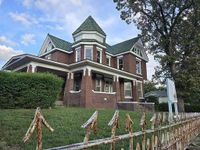Across the United States, the affordable housing crisis continues to drive innovation, investment, and, at times, controversy. From the historic streets of Hot Springs, Arkansas, to the tech-fueled sprawl of California’s Bay Area and the sun-soaked communities of Daytona Beach, Florida, cities are grappling with how to provide safe, accessible, and genuinely affordable homes for their residents. The approaches and outcomes, however, could hardly be more varied.
In Hot Springs, city leaders are betting big on the power of history and preservation. The city recently secured $750,000 from the National Park Service’s Paul Bruhn Historic Revitalization Grants Program, a sum earmarked to breathe new life into vacant, historic properties. The goal? To increase the supply of affordable housing while honoring the city’s architectural legacy. According to the Hot Springs Planning and Development Department, “(The grant) is enabling Hot Springs to fill long-vacant historical buildings with affordable housing.” The effort is part of a broader affordable housing strategy adopted in late 2023, and city officials plan to reapply for the grant annually to keep the momentum going.
The demand for such funding is nothing short of staggering. By the August 27, 2025, deadline, Hot Springs had received 12 applications—requests totaling six times the available grant money. Many of these proposals focus on properties within the Central Avenue and Pleasant Street historic districts, areas protected by a preservation ordinance dating back to 1988. There are 525 structures in the city that either sit on the National Register of Historic Places or contribute to the character of a historic district, representing a timeline stretching from the 1880s through 1975. Thanks to a recent survey by a Houston consulting firm, the period of historical significance in Pleasant Street was even extended to 1974, making more buildings eligible for both funding and valuable historic tax credits.
Kathy Sellman, the city’s Planning and Development Director, explained the next steps: “The historic district commission and planning and development staff will rate and rank the applications. At that point we’ll determine what’s eligible and recommend an ordered list of funding.” The city’s approach is incremental, with the new preservation plan—funded by an Arkansas Historic Preservation Program grant—set to be rolled out in phases. Sellman added, “People are very excited about this. Even if you don’t read it from front to back, you can flip through it and find some fascinating things. This was a very interesting project.”
While Hot Springs is leveraging its storied past, the Bay Area is pushing the boundaries of scale and investment. On August 31, 2025, Santa Clara County announced it had exceeded its Measure A affordable housing goal by 38%, delivering more than 4,800 new homes. Among the standout projects is the La Avenida Apartments in Mountain View, a 100-unit complex serving families and individuals earning between 30% and 60% of the area median income. The development is a concrete example of how targeted funding can provide options for those often squeezed out of Silicon Valley’s high-priced housing market.
But perhaps the most eye-catching deal of the year—at least in terms of sheer dollar value—unfolded in San Jose. On September 1, 2025, a joint venture led by Standard Communities, Housing on Merit, and Vistria Real Estate acquired Park Kiely, a sprawling 948-unit affordable housing community, for a whopping $370 million. According to The Mercury News, the buyers secured a $203.5 million Freddie Mac loan and a property tax welfare exemption, both of which will be used to renovate the 1972-built complex. The commitment? To keep Park Kiely affordable for at least 30 more years, ensuring that hundreds of families can continue to call it home.
Park Kiely is no ordinary apartment complex. Spread across 32 acres and comprising 31 buildings, it offers studio to three-bedroom apartments for residents earning up to 80% of the area median income. Amenities are plentiful: a fitness center, volleyball and tennis courts, two spas, four swimming pools, 14 laundry facilities, a clubhouse, and a business center. The acquisition is notable not just for its size but for its role in a broader surge of multifamily investment in San Jose. Year-to-date as of May 2025, five large properties had traded hands for a combined $598 million—a figure $85 million higher than the same period last year, according to a Yardi Matrix metro report.
Yet, as the money pours in and the units multiply, the question of quality remains front and center. Nowhere is this more apparent than in Daytona Beach, Florida, where the 38-acre Clyde Morris Landings complex stands as both a beacon of affordability and a lightning rod for controversy. Offering rents as low as $411 for one-bedroom apartments and $570 for some three-bedrooms, the complex has attracted more than 1,600 tenants. It’s received about $1.8 million in property tax breaks over 15 years, another $1.8 million in developer incentive grants, and $24 million in multi-family housing revenue bonds. In exchange, 621 of its 709 apartments are designated as affordable, with rents subsidized by a patchwork of assistance programs.
But the reality on the ground is far from idyllic. Since the start of 2025, the Daytona Beach Police Department has logged over 1,500 calls from the complex, including reports of shootings, drug dealing, harassment, and overflowing trash. Residents have described a litany of woes at city commission meetings, from predatory towing and unexpected rent hikes to unresponsive management. “It’s just despicable,” said one elderly former tenant, Kathleen Solti, after her car was towed and she was left unable to pay her rent. Another resident, Cheryl Martin, summed up the mood: “They’re very nice apartments. Management is the problem.”
Apartment managers insist they’re responding, citing new security doors, increased lighting, surveillance cameras, and efforts to recruit police officers as tenants. “Management faces a variety of challenges with over 1,600 residents across all phases (of the apartments), of which nearly 650 are minors,” said Maritza Rivera, operations director for Concord Management. Still, city commissioners like Dannette Henry and Stacy Cantu remain concerned. As Henry put it, “These people feel helpless. They don’t know what to do.”
For cities across America, the lesson is clear: building affordable housing is only half the battle. Ensuring it remains safe, well-managed, and truly accessible is an ongoing challenge—one that demands vigilance, creativity, and, above all, a willingness to listen to those who call these places home.




